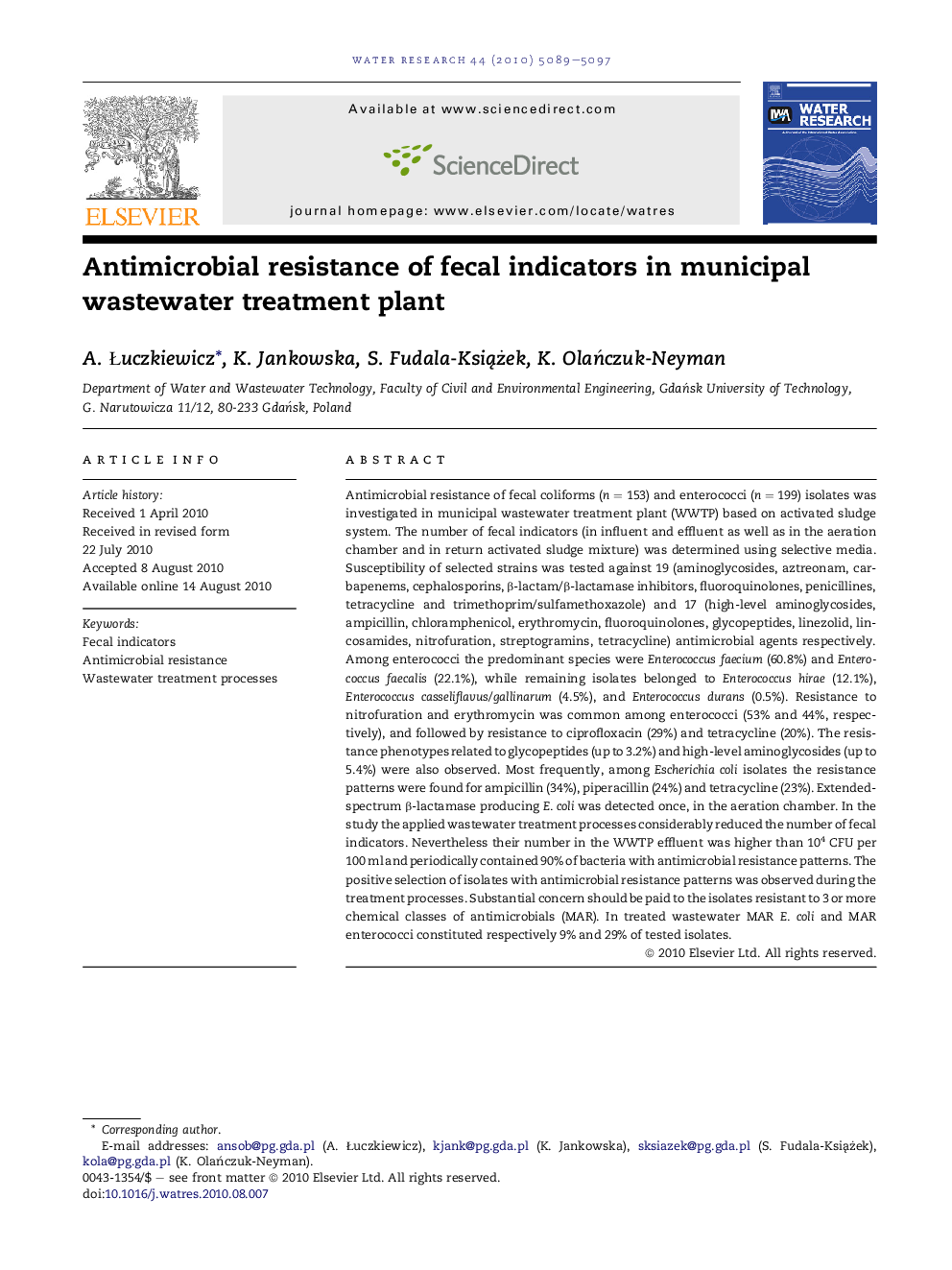| کد مقاله | کد نشریه | سال انتشار | مقاله انگلیسی | نسخه تمام متن |
|---|---|---|---|---|
| 4483562 | 1316891 | 2010 | 9 صفحه PDF | دانلود رایگان |

Antimicrobial resistance of fecal coliforms (n = 153) and enterococci (n = 199) isolates was investigated in municipal wastewater treatment plant (WWTP) based on activated sludge system. The number of fecal indicators (in influent and effluent as well as in the aeration chamber and in return activated sludge mixture) was determined using selective media. Susceptibility of selected strains was tested against 19 (aminoglycosides, aztreonam, carbapenems, cephalosporins, β-lactam/β-lactamase inhibitors, fluoroquinolones, penicillines, tetracycline and trimethoprim/sulfamethoxazole) and 17 (high-level aminoglycosides, ampicillin, chloramphenicol, erythromycin, fluoroquinolones, glycopeptides, linezolid, lincosamides, nitrofuration, streptogramins, tetracycline) antimicrobial agents respectively. Among enterococci the predominant species were Enterococcus faecium (60.8%) and Enterococcus faecalis (22.1%), while remaining isolates belonged to Enterococcus hirae (12.1%), Enterococcus casseliflavus/gallinarum (4.5%), and Enterococcus durans (0.5%). Resistance to nitrofuration and erythromycin was common among enterococci (53% and 44%, respectively), and followed by resistance to ciprofloxacin (29%) and tetracycline (20%). The resistance phenotypes related to glycopeptides (up to 3.2%) and high-level aminoglycosides (up to 5.4%) were also observed. Most frequently, among Escherichia coli isolates the resistance patterns were found for ampicillin (34%), piperacillin (24%) and tetracycline (23%). Extended-spectrum β-lactamase producing E. coli was detected once, in the aeration chamber. In the study the applied wastewater treatment processes considerably reduced the number of fecal indicators. Nevertheless their number in the WWTP effluent was higher than 104 CFU per 100 ml and periodically contained 90% of bacteria with antimicrobial resistance patterns. The positive selection of isolates with antimicrobial resistance patterns was observed during the treatment processes. Substantial concern should be paid to the isolates resistant to 3 or more chemical classes of antimicrobials (MAR). In treated wastewater MAR E. coli and MAR enterococci constituted respectively 9% and 29% of tested isolates.
Journal: Water Research - Volume 44, Issue 17, September 2010, Pages 5089–5097